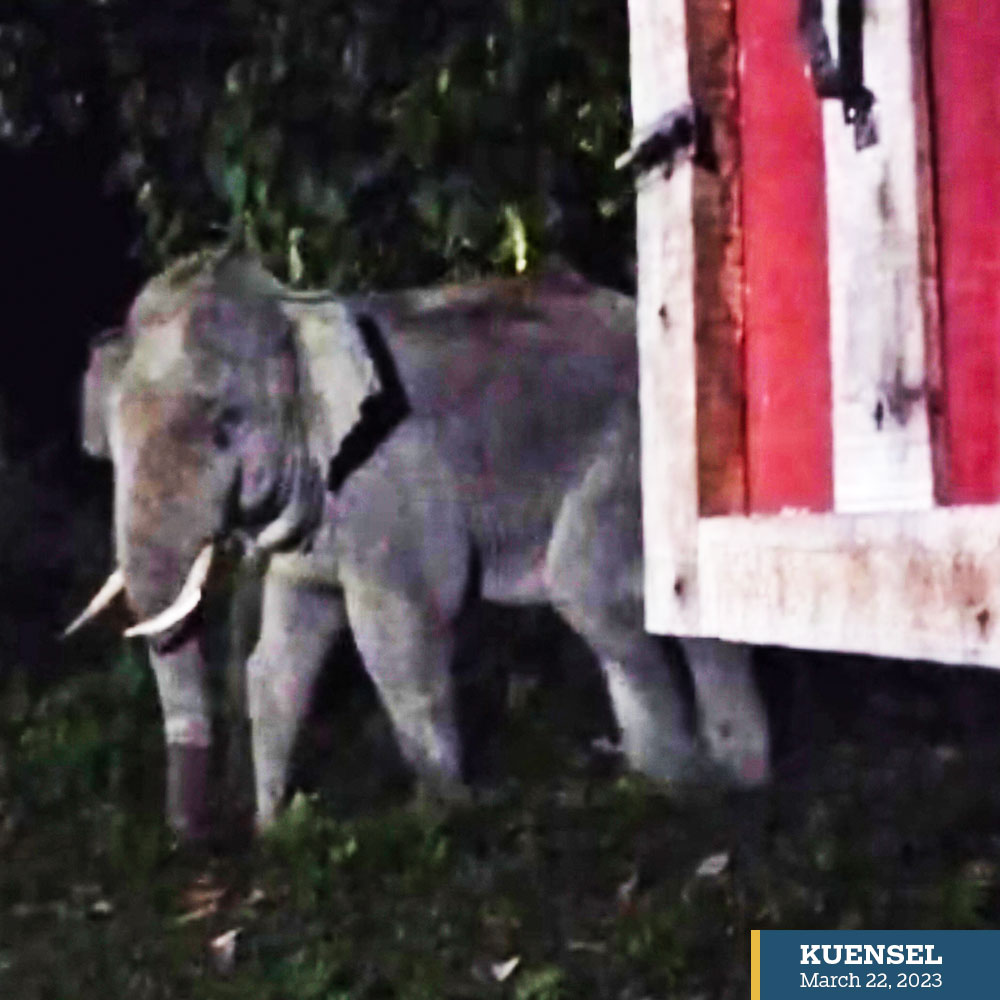… Elephants feeding on waste becomes a threat to villagers
YK Poudel
The Khandothang landfill in Samtse gewog has become a feeding ground for wild elephants, worrying farmers. Concerned with the increasing crop predation, the recent Dzongkhag Tshogdu (DT) decided to introduce vermicomposting to reduce bio-degradable waste.
Vermicomposting is the process by which worms are used to convert organic materials (usually wastes) into a humus-like material known as vermicompost.
The landfill at Khandothang, located in the once grazing ground, attracts elephants that then stray into orchards and crops. Residents say, increasing crop predation has posed risk to lives as well as discouraged farmers from cultivating their land. Farmers request the officials concerned to relocate the landfill.
A resident of Khandothang, Karma Wangzin, said that the five-acre landfill used to be a grazing land for four villages. “It is now an eye-sore and attracts wild elephants,” he said. The area was turned into a landfill when the land remained barren. Karma Wangzin said he planted betel nuts with the hope to earn some cash income. “Over 100 growing betel nut plants were damaged,” he said.
Animals visiting the landfill is also a concern for safety. “The landfill is polluted with no proper fencing. Cattle in the village and wild elephants eat the waste disposed there, affecting their lives.
The DT planned to improve the area by vermicomposting the landfill,” Karma Wangzin said. “However, vermicomposting may not be an effective solution to elephant rampage as the elephants will then directly enter the villages posing greater risks. We seek permanent and feasible solutions at large,” he said.
Prem Koirala, a resident from Majathang said that the salt contained in the waste disposed there attracts elephants in the afternoon and it enters the villages at night posing risks to the residents. “It has been over three years that we have been complaining to the gewog and seeking help.” The gewog administration and officials from RNR Centre assist us with patrolling and chasing the elephants.
Starting vermicomposting, he said, and turning waste into manure is a good resolution through DT. “However, the concern is ensuring how farmers regain faith in farming over these risks. The schools have started and the risk of children and families getting attacked requires immediate attention,” he said.
Samtse Gup, Wangchuk Lepcha said that the majority of the fields have remained barren and idle due to frequent elephant rampages. “Khandothang village has about 300 households. Farmers cultivate their land, but cannot reap their harvest.”
There were over 60 complaints related to elephants destroying the crops in the gewog this year.
DT Thrizin, Nima Drukpa said that there are no plans to relocate the landfill. “Tashichhoeling gewog has reported the highest number of elephant destructions last year. For now, we cannot find a definite solution and vermicomposting sounds a feasible solution.”
Thrizin said that initiatives like waste segregation at source started in all the gewogs to reduce the amount of waste in the landfill, while villagers can earn some money through selling scraps. The current landfill can be turned into a productive area when all the wastes are composted,” he said.
The dzongkhag administration, he said, is looking for possibilities of reducing waste production through Zero Waste application. “Vermicomposting was discussed as one of the most efficient ways to reduce bio-degradable waste during the DT,” he said.
Constructed in 2006, the landfill is a dumping yard for all kinds of bio-degradable and non-bio-degradable wastes from Samtse town and other nearby gewogs.
Located five-kilometres from Samtse town, the landfill is close to Khandothang village and the Samtse-Sibsoo highway.


